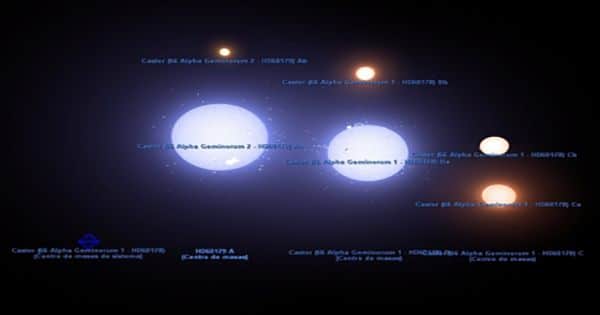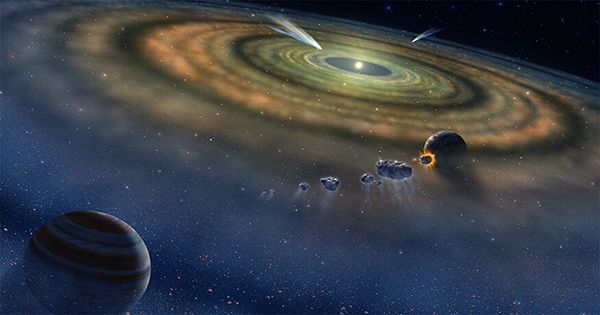Stars can get into quite weird configurations, which are often more difficult to clarify and model. However, the system TIC 168789840 is almost too remarkable really describe. It was the first to invent a six-star system where each pair they received was binary. A, B, and C – each of these three pairs of stars orbits each other in a few days. Thus, from the point of view of our planet, some of the stars in the system partially covered by its companion. If it’s not already exciting, the A and C systems revolve around each other every four years, and these two systems orbit the B system every 2,000 years. A big dance that is incredible.

NASA Found a Six-Star System Where Stars Are Constantly Eclipsing Each Other
The study adopted for publication in the Astronomical Journal. The team describes how this system, like Castor, is the second brightest object in the constellation Gemini. Castor is also a six-star system, but only one pair in the castor system accepted from our point of view. Another difference is how the pairs of TIC 168789840 (equally interestingly known by TYC 7037-89-1) are similar. They really are seen as three and researchers believe this is an important formula for how the system can be structured and developed.
The international team wrote in the paper, which is available on the ArXiv, “In this work, we discovered the first known sextuply-eclipsing sextuple star system TIC 168789840.” “TIC 168789840 is an interesting system that naturally enables additional observation and analysis. Although very similar to the famous Castor system, TIC’s “triple” nature 168789840 enables further investigation of its star formation and evolution with the presence of three primary and three secondary planets.”
The team put forward the possibility that they would form A and C as binary with dense disks of the material around them. They eventually confronted by Star B, which was caught in a wide orbit. All of this tension causes the gas in the disk to break up into smaller joints, orbiting in almost the same plane. This is a compelling hypothesis, but without much information, it remains highly speculative.
The discovery of this system is thanks to NASA’s Transiting Exoplanet Survey Satellite (TSES). TESS is tracking millions of stars and studying about 200,000 details. The team was able to use a machine-learning algorithm to find planetary binary in 60 million stars. Of these, at least 100 were identified to be in systems with more than three stars. TIC 168789840 According to the Latin name of the longest river in Italy, the Southern Hemisphere constellation Eridanas is located 1,900 light-years away.















